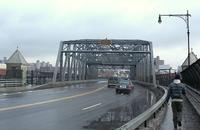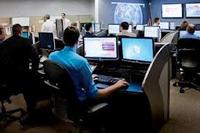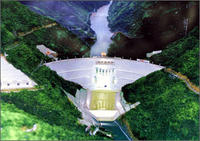-
Scientists improving process to recycle rare-earth materials
Recycling keeps paper, plastics, and even jeans out of landfills. Could recycling rare-earth magnets do the same? Perhaps, if the recycling process can be improved; scientists are working more effectively to remove the neodymium, a rare earth element, from the mix of other materials in a magnet; initial results show recycled materials maintain the properties that make rare-earth magnets useful
-
-
Kaspersky Lab working on a secure operating system for critical infrastructure
Antivirus firmKaspersky Lab is set to make a major contribution to the security of critical infrastructure systems by developing an operating system specifically designed for such systems; the new operating system will protect information used in infrastructure such as nuclear power plants, transportation control facilities, gas and electrical systems,and other facilities “criticallyimportant” to the economy and well-being of industrialized societies
-
-
Assessing bridge resilience
Across the United States, more than 600,000 bridges link travelers to millions of roadway miles, forming a critical part of the nation’s infrastructure; because bridges are typically more vulnerable than roadways to damage caused by natural and man-made hazards, they are also of interest to DHS, which funds cutting-edge research in various aspects of structural integrity testing and blast-resistant structural design
-
-
Analyzing the sound of rain falling on a bridge reveals bridge’s health, stability

Engineers have found that by listening to how a highway bridge sings in the rain, they can determine serious flaws in the structure; employing a method called impact-echo testing, engineers can diagnose the health of a bridge’s deck based on the acoustic footprint produced by a little bit of water
-
-
Cybersecurity bill supporters want a vote on bill in this Congress
Last week, lawmakers and top White House officials appeared in different events, conferences, and industry gatherings to promote the cyber security bill which has been stalled in the Senate since August; administration’s officials and lawmakers supporting the bill warned that the current situation leaves U.S. critical infrastructure and businesses vulnerable to attack from hackers and spies
-
-
A Mississippi river diversion helped build Louisiana wetlands
The extensive system of levees along the Mississippi River has done much to prevent devastating floods in riverside communities; the levees, however, have also contributed to the loss of Louisiana’s wetlands; by holding in floodwaters, they prevent sediment from flowing into the watershed and rebuilding marshes, which are compacting under their own weight and losing ground to sea-level rise
-
-
Corps: absolute flood protection along the Missouri River is impossible
A U.S. Army Corps of Engineers report said that absolute flood protection along the Missouri River is impossible, so the basin needs to prepare and plan for flooding in the future
-
-
Sen. Rockefeller asks Fortune 500 CEOs for cybersecurity best practices

Last month, Senator Jay Rockefeller (D-West Virginia) sent a letter to the CEOs of fortune 500 companies asking them what cybersecurity practices they have adopted, how these practices were adopted, who developed them, and when they were developed; many saw Rockefeller’s letter as an admission that the Obama administration does not have a basis for trying to impose cybersecurity practices on the private sector through the Cybersecurity Act of 2012, now stalled in Congress
-
-
More companies adopt cloud disaster recovery solutions

More and more companies adopt a cloud disaster recovery solution; in a recent 2012 TechTarget Cloud Pulse survey, a majority of the 926 companies that responded have said they are now using a cloud disaster recovery system or plan to in the next six months
-
-
Scientists say it is too late to stop global warming: better to focus on adaptation, mitigation
Two scientists argue that governments and institutions should focus on developing adaption policies to address and mitigate against the negative impact of global warming, rather than putting the emphasis on carbon trading and capping greenhouse-gas emissions; they say that attempts to limit greenhouse-gas emissions through carbon cap-and-trade schemes and to promote renewable and sustainable energy sources are probably too late to arrest the inevitable trend of global warming
-
-
States may join feds in regulating infrastructure cybersecurity
Dealing with cybersecurity issues relating to U.S. inmfrastructure has largely been a federal responsibility, carried out through the North American Electric Reliability Corporation Critical Infrastructure Requirements (NERC-CIP)’ the limitations of these requirements have led state regulators to consider increasing state role in infrastructure protection
-
-
Rehabilitating historical structures using laser scanning technology
The Carmel Mission Basilica in California is undergoing a restoration using cutting-edge laser scanning technology; earlier this year, engineers the from Blach Construction Company teamed up with CyArk, a non-profit foundation that digitally preserves historical sites, to shoot laser beams at and within the basilica to create precise digital maps of the building from different angles
-
-
Water level gauges failed during Hurricane Isaac
As Hurricane Isaac beat down on New Orleans, the damage it caused was nowhere near as severe as that of Katrina, but it lasted longer than most people expected and for the U.S. Army Corps of Engineers, it provided a field test of a multi-billion dollar investment in flood protection
-
-
China’s Mekong River dams undermine neighbors’ economies, food production

Five Chinese dams on the Mekong River’s upper portions have caused rapid changes in water level, and other adverse effects, downstream, especially in Vietnam, Cambodia, Thailand, and Laos, where millions of people rely on the river for water, food, and transportation
-
-
Carbon dioxide “corrodes” ice, causing glaciers, ice caps to crack
The amount of carbon dioxide in the atmosphere has risen from roughly 280 ppm shortly before the industrial revolution to about 390 ppm today; now researchers done atom-level simulations that suggest that increased concentrations of the gas causes ice to become more brittle, and so more likely to break up or crack; this explains the cracking of glaciers and ice caps
-
- All
- Regional
- Water
- Biometrics
- Borders/Immig
- Business
- Cybersecurity
- Detection
- Disasters
- Government
- Infrastructure
- International
- Public health
- Public Safety
- Communication interoperabillity
- Emergency services
- Emergency medical services
- Fire
- First response
- IEDs
- Law Enforcement
- Law Enforcement Technology
- Military technology
- Nonlethal weapons
- Nuclear weapons
- Personal protection equipment
- Police
- Notification /alert systems
- Situational awareness
- Weapons systems
- Sci-Tech
- Sector Reports
- Surveillance
- Transportation
Advertising & Marketing: advertise@newswirepubs.com
Editorial: editor@newswirepubs.com
General: info@newswirepubs.com
2010-2011 © News Wire Publications, LLC News Wire Publications, LLC
220 Old Country Road | Suite 200 | Mineola | New York | 11501
Permissions and Policies
Editorial: editor@newswirepubs.com
General: info@newswirepubs.com
2010-2011 © News Wire Publications, LLC News Wire Publications, LLC
220 Old Country Road | Suite 200 | Mineola | New York | 11501
Permissions and Policies
